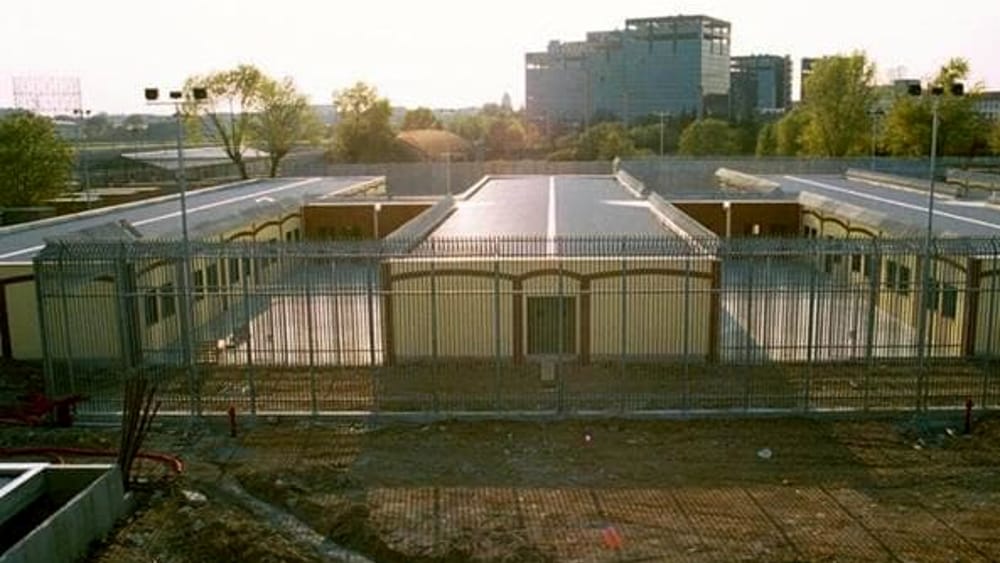Interview with Tomasz Bonek, author of the latest book “Lubiąż. Biografia Cudu”
– Your new book about the monastery in Lubiąż has just been published. What will we be able to read about this time?
– “Lubiąż. Biografia Cudu” is the story of the abbey from its foundation to the present day, told through reportages. It also contains legends, secrets, and stories about attacks, plundering and robberies.
It is worth realizing that the monastery, even though it is 850 years old, has not had a scientific, historical monograph. So far, no other book has been written that would comprehensively describe his fate. And yet this fantastic monument, I call it the Miracle, deserves fame. My new book is a nod to this direction, I hope that it is the first step that will encourage scientists and historians to fully, academically study its history, and, above all, present the history of this extraordinary place to a wide audience. Because we praise other people’s people, but we don’t know our own…
– To Pana another book about this monument. What do you say to him? attracts?
– It is the largest and most mysterious monument in Poland. So please allow me, in answer to this question, to quote what the publisher wrote on the cover of my book:
“If the Lubiąż abbey was located not on the Oder, but on the Loire, it would be as famous as the local castles.
It has been for sale since 1810, but so far no one has dared to invest in it. All comers are struck and horrified by its enormity. The volume is three times larger than the Wawel Royal Castle. It is the second largest religious building in Europe – only the Spanish Escorial is larger.
In 2014, National Geographic announced it as one of the Wonders of Poland. And no wonder, because it has been delighting everyone who sees it for almost nine hundred years. First the Piast princes and then the Habsburg emperors fell in love with him. Famous artists decorated its interiors. The highest dignitaries of the Third Reich set up a secret research center there. They were working on technology that was supposed to change the course of the war. During martial law, the Festung Breslau treasure was searched in the local underground. Now it intimidates tourists coming from all over the world.
Turbulent history, involvement in great politics and dark secrets create the biography of the Lubiąż abbey, told by reporter and documentarian Tomasz Bonek. It is the history of not only Lower Silesia, but all of Poland in a baroque nutshell.”
– Please tell us about an interesting or maybe new thread that appears herebook?
– In Lubiąż’s biography, probably as the first author, I extensively describe how the so-called secularization of the abbey, i.e. its plunder by the Prussian state. I tell how valuables and works of art were taken away from here, how monks were expelled.
I also present a broader psychiatric hospital operating for over a hundred years within the walls of the monastery and the abbots’ palace. I also write about the forced sterilizations of his patients and the T4 operation, which also took its bloody toll here.
And above all, I hold accountable the Polish state authorities, who have not taken care of this monument for decades. I point out those responsible for the fact that today he is the so-called “permanent ruin” that it has not yet regained its former glory.
– You’re here a reporter and he writes his books in this style. Is that also the case with “Biography of a Miracle?”
– Of course. In my opinion, this is the best journalistic and literary genre, allowing a wide audience to learn about history – events and their context. So I paint pictures with words, take the reader back to ancient times, and involve him in scenes that took place in the abbey. This is what the report is like…
– There are also beautiful photos in it. What decided about their choice?
– I wanted to present, above all, the nooks and crannies of the monastery that are normally inaccessible, not open to tourists, ruined, but beautiful nonetheless. Beauty in ruins tempts us, makes us scream: why does this monument look like this? He asks to finally take care of him. The book contains photos taken in former monastic cells, where Soviet soldiers lit fires – their walls are still filled with smoke. There are also photos of mysterious cellars, as well as the closed, unrestored chapter house and the winter refectory – the monks’ dining room.
– In today’s media world, is it better to watch or read?
– The world of media is no longer ruled by even photos, but primarily by videos. On the Internet, we usually pay attention for only three seconds and scroll through another video on our smartphone with our finger.
Even Michael Jackson came to Lubiąż under the influence of such a moment, a three-second delight. He was shown a photograph of the monastery in Warsaw and said: “I must see this miracle as soon as possible.” He flew here by helicopter, entered the Prince’s Hall and was speechless. It was said then that he would buy it…
– And back to the monument itself. A lot is written and said about it, but it still stands empty and unrenovated. Will this ever change? Whose fault is it?
– It is estimated that approximately one and a half billion zlotys are needed to adapt the Lubisk monastery for some sensible purposes – to create a museum, a hotel, a rehabilitation center or a conference center.
Investors from all over the world came to him, even sheikhs and fabulously wealthy Indians. Each of them was horrified by the size of the abbey – it is three times larger than the Wawel royal castle. This vastness is its pride, but also its curse. I think that no one else but the state should take it over and renovate it with public funds and create a wonderful museum there, e.g. of Silesia. The history of Lubiąż is the history of our region, and perhaps the whole of Poland, in a nutshell. And there is no such museum. I think Lubiąż is a perfect place to organize it. It would stimulate both economically and touristically not only this town, but also the commune and the Wołów district. Maybe such an initiative would reconcile local government officials who have always been at odds. You ask who is responsible for what the complex of post-Cistercian buildings, a priceless monument, looks like today? I believe that, first of all, all the ministers of culture who held their office after 1989, but also each of us – residents of this district or even voivodeship. This is because we were not effective enough in putting pressure on the authorities, both national and local, which we elected. If we were able to unite, band together, break up nationally, as we sometimes do, Lubiąż would be a Polish tourist pearl today, and not the great shame it is.
– Your author’s meeting will take place on October 20 in Lubiąż – whenever PWhen I organize it there, crowds come from all over Poland. What can we expect this time?
– I assure you that this time there will be no shortage of interesting stories, anecdotes and an amazing atmosphere. I will also add that on this day you will be able to look into the usually inaccessible nooks and crannies of the former abbey, not normally open to the public. So I invite you on Sunday from 10 a.m. to 2 p.m. for sightseeing and at 12 to meet me in the Abbot’s Dining Room. I will be happy to sign books on site if you are interested.
Marta Ringart-Orłowska


